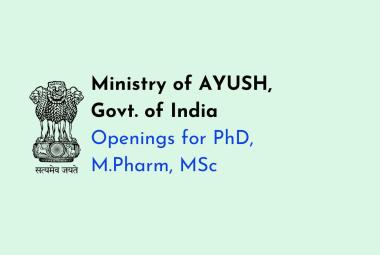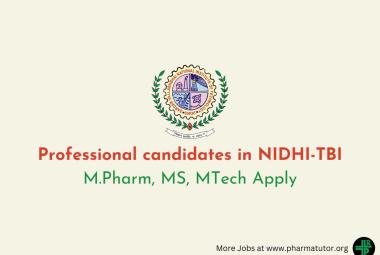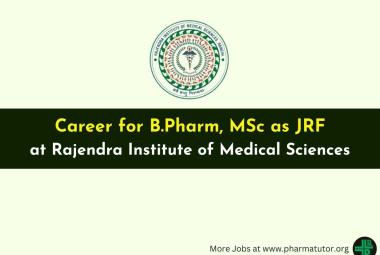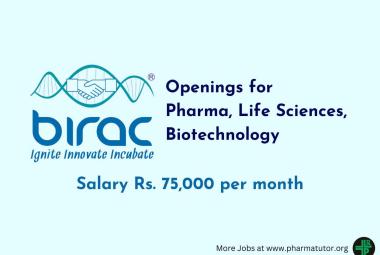{ DOWNLOAD AS PDF }
 ABOOUT AUTHORS:
ABOOUT AUTHORS:
Manu Sharma1, Shikha Chaudhary1, Dharmendra Kumar2*
1 R.V.Northland institute, greater Noida, Dadri, UP, India
2Brahmanand Group of Institution, 195, Khurja G.T Road, Buldshahar Uttar Pradesh, India.
*rvnimiet@gmail.com
ABSTRACT
Chitosan as cationic and pectin as anionic are natural polysaccharides which show great potential in nasal drug delivery system. Chitosan’s are strongly poly-cationic. They are derivatives of poly-N-acetyl-D-glucosamine. Chitosan’s have positive charge that is responsible for mucoadhesion and play an important role in nasal drug delivery system Pectin’s have several structural elements: Homogalactouronan are smooth and Rhamnogalactouronan are hairy which play a very important role.By methyl esterifications, pectin’s are divided in two types: High methoxypectin’s and low methoxypectin’s. Low methoxypectin’s are very important in the formulation of nasal gel, because they have properties to form the gel with calcium ion (Ca2+).
[adsense:336x280:8701650588]
REFERENCE ID: PHARMATUTOR-ART-2163
|
PharmaTutor (ISSN: 2347 - 7881) Volume 2, Issue 5 Received On: 08/03/2014; Accepted On: 23/03/2014; Published On: 01/05/2014 How to cite this article: M Sharma, S Chaudhary,D Kumar; History of Cationic Vs Anionic: in nasal drug delivery system; PharmaTutor; 2014; 2(5); 104-107 |
INTRODUCTION
Chitosan:
Chemical structure:
a) Tombs and Harding 1998, Rinaudo 2006, Yen and Mau 2007, Chitosan is found in exoskeletons of crustaceans such as crabs and shrimps, cell of fungi and bacteria.
b) Terbojevich and Muzzarelli 2000, Chitosan have following properties:
i) Biodegradable ii) Non-Toxic iii) Non-immunogenic iv) Biocompatible
Physical Properties: Ogawa and Yui 1994, Chitosan exhibits a degree of polymerisation and found in semi-crystalline form. It is solubilised in acidic aqueous media. It is more soluble in organic acid compared to inorganic acids.
Parketal 1983,Chitosan is a weak base with pKa values ranging from 6.2 to 7.0 and it gives low solubility at physiological pH 7.4 or more.
Kubota and Eguchi 1997, molecular weight and distribution of acetyl group are play an important role in chitosan solutions.
Rinaudo, 2006, aqueous solubility of chitosan is affected by addition of electrolyte and salting out if excessive amount of HCl added.
Terbojevich and Muzzarelli 2000, inter-chain repulsion was reducing by addition of electrolyte in chitosan solution.
Tombs and Harding 1998, viscosity of chitosan affect the several factors such as – molecular weight, pH, ionic strength, and temperature.
[adsense:468x15:2204050025]
On the basis of researchers chitosan have two type of structure:
1. Rigid rod-type structure Terbojevich et al 1991, Errington et al 1993, Colfen et al 2001, Fee et al 2003, Kasai 2006, Moriss et al 2009a.
2. Semi flexible coil structure Rinaudo et al 1993, Berth et al 1998, Brugnerottoet al 2001, Schatz et al 2003, Mazeau et al 2004, Vold 2004, Lamarque et al 2005, Valasquez et al 2008.
Terbojevich et al 1991, Mazeau 2004,have also been show flexibility.
Dodou et al 2005, Illum 2002, Harding 2006, gives following different theories of mucoadhesive- wetting theory, electronic theory, absorption theory, and diffusion theory with their material properties such as swelling, non-covalent molecular bonding, spatial conformation, rheological properties, covalent molecular bonding.
Aspden et al 1997, Davis and Illum 2000, nasal insulin delivery is more effective with chitosan of molar mass greater than 10000g/mol.
Pectin
Chemical structure:
Van Buren 1991, Tombs and Harding 1998, Ridly et al 2001, Wilats et al 2001,pectin’s are complex structure of heteropolysaccharides and have a large proportion of the primary cell walls of dicolyledons. Pectin polysaccharides have homogalacturonan (smooth) and type 1 rhamnogalacturonan (hairy). By methoxy esterification pectin divided in two types 1. High methoxy pectin. Low methoxy pectin.
Physical properties:
Lapasin 1995, Tombs and Harding 1998,function properties of pectin in a plant cell weredepending on charge of pectin. It is also play an important role as gelling and thickening agent.
Oakenfull 1991, high methoxypectin’s (low charge) at high amount form gels at low pH (<4.0). And high methoxypectins are solubilized by hydrogen bonding. Low methoxy pectin gels stabilized by divalent metal cations.
Use in drug delivery.
Sungthongjeen et al 2004, in recent pectin uses as gelling agent in several controlled drug delivery such as nasal gel, ocular gel with following advantage. Non-toxic, low production cost, high availability.
Lui et al 2003, Yadav et al 2009, pectin gels are generally well accepted by patient.
NASAL DELIVERY
Jabbal Gill et al 1998, when orally drug delivery is not acceptable or have problems in absorption or not optimum clearance time nasal epithelium absorption get attraction with rapid absorption such as peptide based drug.
Sriamornsak 2004, Chelladurai et al 2008, pectin gels are pseudo plastic in nature.
Charlton et al 2007, McConaughy et al 2009, pectin’scause high junctions so it does not act as absorption enhancer.
Nafee et al 2004, Thirawong et al 2008, pectin’s are high mucoadhesive but less than chitosan.
Lui et al 2007, Thirawong et al 2008, mucoadhesive properties of pectin depend on molecular weight, viscosity, pH and function groups.
Thibault& Petit 1979, pectin’s are found in the middle lamella and primary cell walls of plant tissues.
Pilnik and Voragen 1992, the presence of 15-30% pectins in dried sugar beet pulp and its availability in large quantity attracted the attention of scientist. Pectins extracted from apple pomace and citrus peels have high gelling properties than sugar beet pulp.
Pippen, Mecready& Owens 1950, poor gelling ability was attributed to a high acetyl content, Thebault 1986, low molecular weight, Keenam etal 1985- high proportion of side chain.
NOW YOU CAN ALSO PUBLISH YOUR ARTICLE ONLINE.
SUBMIT YOUR ARTICLE/PROJECT AT articles@pharmatutor.org
Subscribe to Pharmatutor Alerts by Email
FIND OUT MORE ARTICLES AT OUR DATABASE
Thebaultetal. 1989b, proposed a procedure composed of a high shear treatment and extrusion, to increase the proportion of water soluble polysachharides followed by an aqueous extraction. The extracted pectins should be useful on a thickener and gelling agent.
Devel and Anyas-Weisz 1954, gives an extraction process in an alkaline medium with a sequestering agent followed by heating. It should form gel with calcium.
Rich 1984, proposed a simple alkaline agent followed by heating. Treatment for making novel agricultural waste absorbent material with the solid isolated.
Ehwald 1993, Cellular structure of pectin with high water absorbing capacity
Ashubaeva and Skripkina1982described a method to produce amidated pectin from sugar beet pulp pectins and their modified pectins produce confectionery two or three times firmer than that made with ordinary pectin.
Steinmetzer 1991, At 25°Camidation with gaseous ammonia in which plant residue diluted with NaOH produce the pectins, which are used as gelling agent in various formulations.
Romboultetal. 1983, Theabaultet al.1986, by using oxidizing agents reproduce cross linking pectin molecules.
Gschwend&kempf 1978, wolf and maga 1993,pectins obtained from potato pulp have poor gelling properties.
Turquois T. etal. 1999,have been developed extraction procedure in alkaline conditions and found high percentage yield i.e. 46.5% form sugar beet pulp and 25.8% form potato pulp.
CONCLUSION
In nasal drug delivery system pectin and chitosan has great interest because of their anionic and cationic properties. As we are discussed above that, both have great water absorbing capacity so they give potential interest in gel formulation.Researchershavealready formulated gel formulation used for various drug delivery systems; nasal gel drug delivery system is the most important for them, because they give high viscous property at low concentration with less toxic effect. On the basis of this review summary, I conclude that if nasal gel formulated by pectin or chitosan, it may be the choice of mucoadhesive agent in the era of nasal drug delivery. And in future pectin or chitosan nasal gel may replace other polymer used as mucoadhesive agent. Nasal gel drug delivery may replace other conventional dosage form specially injections because nasal route is safe and fastest route with patient compliance.
REFERENCE
1.Tombs M. P., and Harding, S. E. An Introduction to Polysaccharide Biotechnology. London: Taylor and Francis. (1998), 134-142.
2.Yen, M-T. Mau, J-L. Physico-chemical characterization of fungal chitosan from shiitake stipes. LWT - Food Science and Technology, (2007), 40, 472-479.
3.Terbojevich, M. and Muzzarelli, R. A. A. Chitosan. In: Phillips, G. O. and Williams, P. A. (Eds.). Handbook of Hydrocolloids Cambridge: Woodhead Publishing Ltd.(2000), 367-378,
4.Ogawa, K. and Yui, T, Effect of explosion on the crystalline polymorphism of chitin and chitosan. Bioscience Biotechnology and Biochemistry, (1994), 58, 968-969.
5.Park, J. W., Choi, K-H. Park, K. K. Acid-base equilibria and related properties of chitosan. Bulletin of the Korean Chemical Society, (1983), 4, 68-72.
6.Kubota, N. and Eguchi, Y. Facile preparation of water-soluble n-acetylated chitosan and molecular weight dependence of its water-solubility. Polymer Journal, (1997) 29, 123-127.
7.Rinaudo, M. Chitin and chitosan: properties and applications. Progress in Polymer Science,(2006). 31, 603-632.
8.Terbojevich, M. Cosani, A., Conio, G., Marsano, E. and Bianchi, E. Chitosan: chain rigidity and mesophase formation. Carbohydrate Research,(1991). 209, 251-260.
9.Mazeau K. and Rinaudo M. The prediction of the characteristics of some polysaccharides from molecular modelling. Comparison with effective behaviour. Food Hydrocolloids, (2004), 18, 885–898.
10.Dodou, D., Breedveld, P. and Wieringa , P. A. Mucoadhesives in the gastrointestinal tract: revisiting the literature for novel applications. European Journal of Pharmaceutics and Biopharmaceutics,(2005). 60,1–16.
11.Illum, L. Nasal drug delivery: new. Developments and strategies. Drug Discovery Today,(2002) 7, 1184–1189.
12.Aspden, T. J., Mason, J. D. T., Jones, N. S., Lowe, J., Skaugrud, Ø. and Illum, I. Chitosan as a nasal delivery system: the effect of chitosan solutions on in vitro and in vivo mucociliary transport rates in human turbinates and volunteers. Journal of Pharmaceutical Sciences,(1997). 86, 509-513.
13.Davis, S. S. and Illum, L. Chitosan for oral delivery of drugs. In: Muzzarelli, R. A. A. (Ed.). Chitosan per os: from Dietary Supplement to Drug Carrier Grottammare: Atec.(2000), 137-164,
14.Van Buren, J. P. Function of pectin in plant tissue structure and firmness. In: Walter, R. H. (Ed). The Chemistry and Technology of Pectin San Diego: Academic Press.(1991), 1-22,
15.Ridley, B. L., O’Neil, M. A. and Mohnen, D. Pectins: structure, biosynthesis and oligogalacturonide-related signalling. Phytochemistry, (2001), 57, 929-967,
16.Willats, W. G. T., McCartney, L., Mackie, W. and Knox J. P. Pectin: cell biology and prospects for functional analysis. Plant Molecular Biology, (2001), 47,9-27.
17.Lapa sin, R. and Pricl. S. Rheology of Industrial Polysaccharides, Theory andApplications. Blackie, London, UK. (1995).
18.Oakenfull, D. G. The Chemistry of High-MethoxylPectins. In: Walter RH (Ed.) the Chemistry and Technology of Pectin, Academic Press, San Diego.(1991), 87-108.
19.Yadav, N., Morris, G. A., Harding, S. E., Ang, S. and Adam s, G. GVarious non-injectable delivery systems for the treatment of diabetes mellitus. Endocrine, Metabolic & Immune Disorders - Drug Targets, (2009).9, 1-13.
20.Jabbal-Gill, I., Fischer, A. N., Rapp uoli, R., Davis, S. S. and Illum, L. Stimulation of mucosal and systemic responses against Bordetella pertussis filamentous haemagglutinin and recombinant pertussis toxin after nasal administration with chitosan in mice. Vaccine, (1998).16, 2039 –2046.
21.Sriamornsak, P. Chemistry of pectin and its pharmaceutical uses: a review.Silpakorn University International Journal,(2003). 3,206–228.
22.Cha rlton, S. T., Davis, S. S. and Illum, L. Evaluation of bioadhesive polymers as delivery systems for nose to brain delivery: In vitro characterisation studies. Journal of Controlled Release, (2007).118,225–234.
23.Chelladurai, S., Mishra, M. and Mishra, B. Design and Evaluation of Bioadhesive in-Situ Nasal Gel of Ketorolac Tromethamine. Chemical and Pharmaceutical Bulletin, (2008).56, 1596-1599.
24.Sungthongjeen, S., Sriamornsak, P., Pitaksuteepong, T., Somsiri, A. and Puttipipatkhachorn, S. Effect of degree of esterification of pectin and calcium amount on drug release from pectin-based matrix tablets. AAPS PharmSciTech,(2004). 5,1-9.
25.Nafee, N. A., Ismail, F. A., Boraie, N. A. and Mortada, L. M. Mucoadhesive delivery systems. I. Evaluation of mucoadhesive polymers for buccal tablet formulation. Drug Development and Industrial Pharmacy, (2004), 30,985-993.
26.Pilnik, W. Pectin many splendored thing. In: Phillips, G. O., Williams, P. A. and Wedlock, D. J. (Eds.) Gums and Stabilisers for the Food Industry Oxford: IRL Press.(1990).5, 209-222.
NOW YOU CAN ALSO PUBLISH YOUR ARTICLE ONLINE.
SUBMIT YOUR ARTICLE/PROJECT AT articles@pharmatutor.org
Subscribe to Pharmatutor Alerts by Email
FIND OUT MORE ARTICLES AT OUR DATABASE









